7 Easy Ways to Teach Chinese with Play Dough (VIDEO)
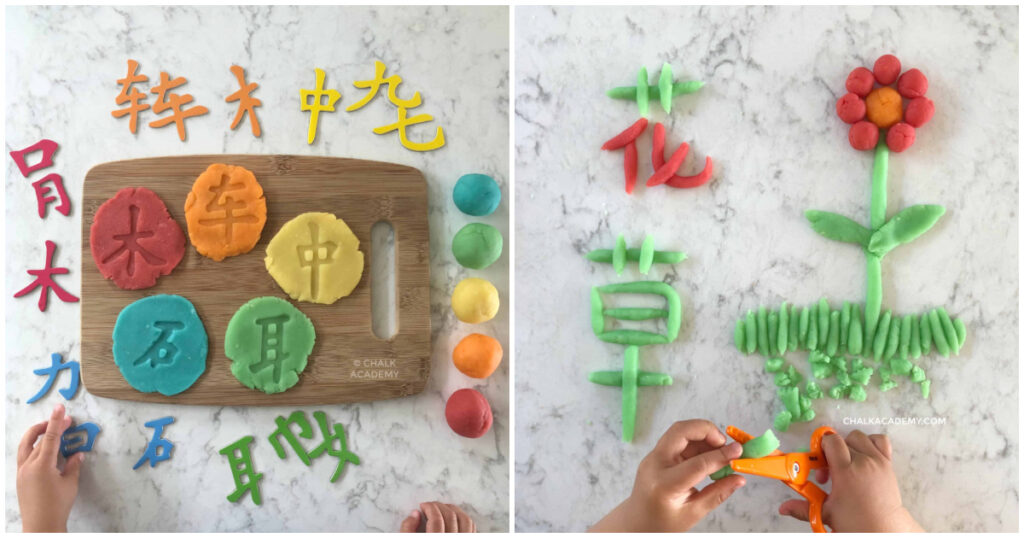
Since we’re raising trilingual children, we try to make the minority languages extra fun at home. Play dough is one of our must-have resources for teaching Chinese characters! There are so many easy ways to teach Chinese with play dough.
Life has been extra busy, so I’m so thankful for a large batch of homemade play dough in my fridge! Play dough has so many learning benefits, and I’m excited to share our favorite play dough teaching tips and tools.
If you’re learning English and Korean, check out these playdough alphabet activities for more inspiration. Be sure to watch the video summary at the end of the post.
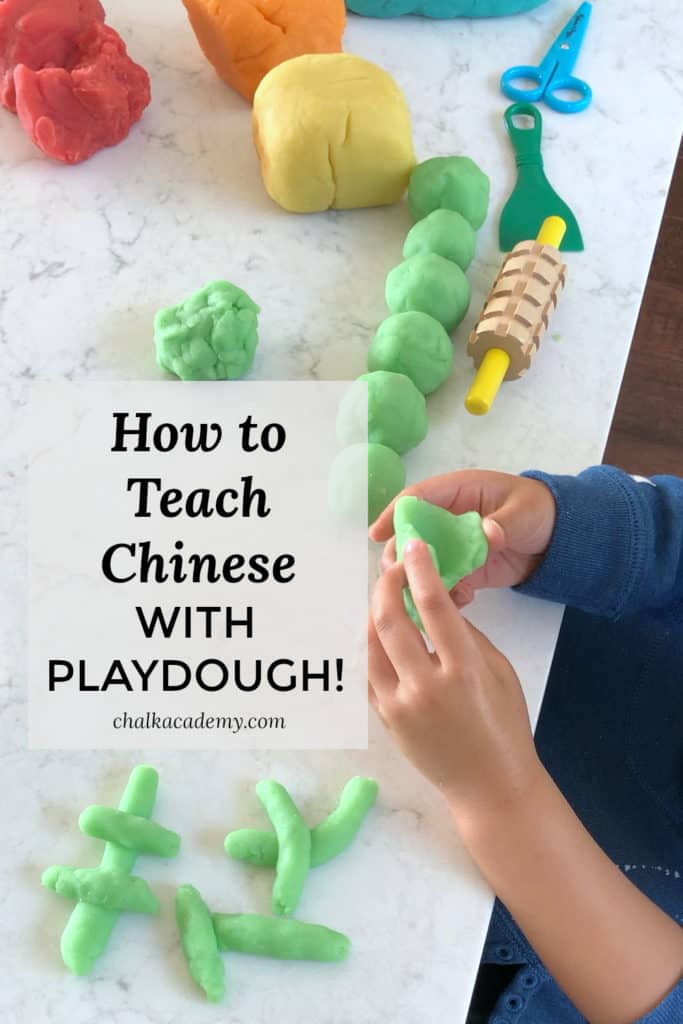
Chalk Academy is reader-supported. Some of the links are affiliate links. When you buy something through an affiliate link, we may earn a very small commission at no cost to you. Details here.
Benefits of teaching Chinese with play dough
I’m always looking for ways to encourage my kids to speak Chinese, our family’s minority language, so play dough comes in handy.
My children are obsessed with play dough and don’t even realize they are learning while playing.
In addition to language and literacy, play dough has been awesome in so many other ways.
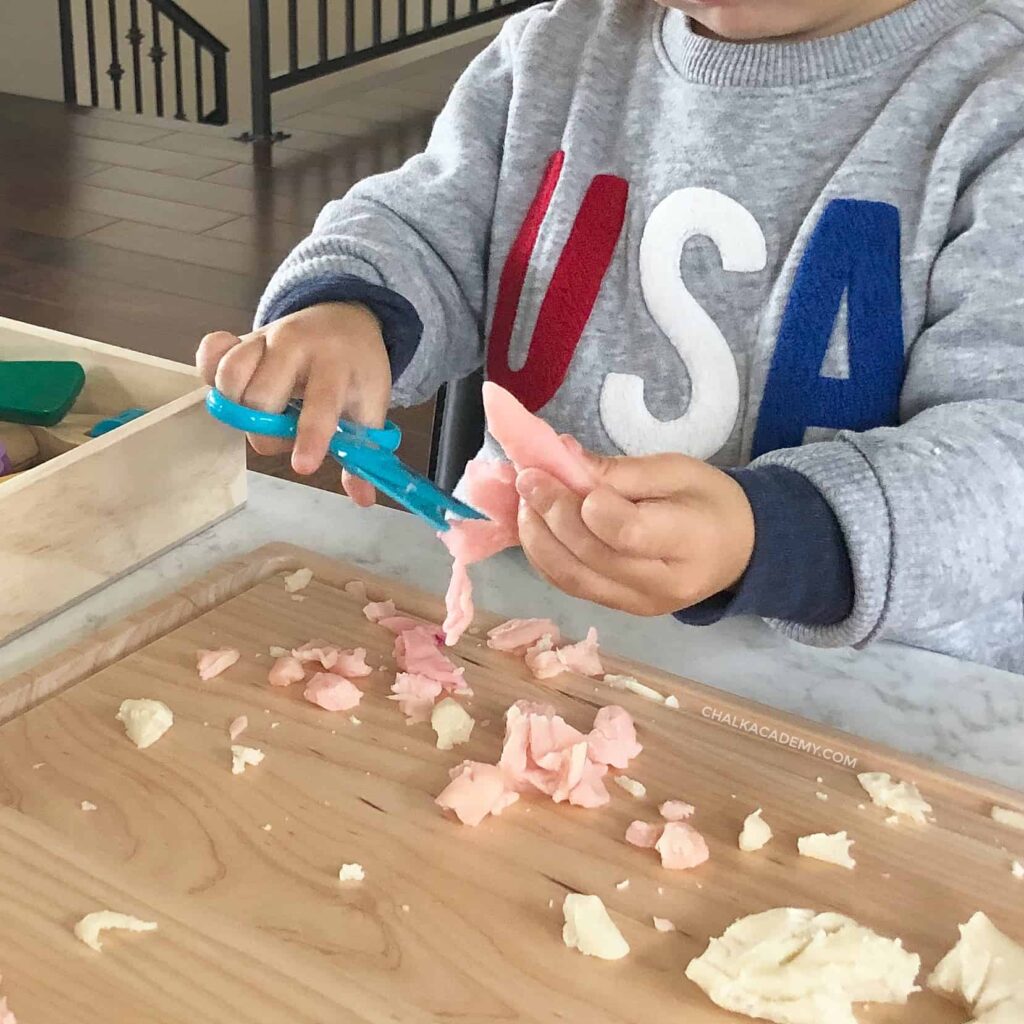
- Fine motor skills: Through squishing, pulling, twisting, kneading, rolling, hammering, and cutting, play dough helps young hands develop hand strength, control, and dexterity.
- Creativity: Play dough so versatile for structured learning as well as imaginative play. It can be molded into anything you dream up.
- Concentration: Since play dough is calming and open-ended, children can often work with it for long periods. When focused play is uninterrupted, play dough becomes a mindfulness activity for kids.
- Science and math: Making homemade play dough is a free math and science lesson! In the kitchen, involve your child with measuring, scooping, pouring, and stirring the ingredients. During play, trial and error is encouraged by creating shapes, comparing sizes, and using various tools!
Try this: How to Teach Kids Basic Math for Free
- Language and literacy: The rest of this post will focus on how to use play dough to teach Chinese. These hands-on activities can help you memorize new Chinese characters.
Fun ways to teach Chinese with play dough
Here are super easy play dough activities that encourage Chinese learning at home. I hope your children enjoy these activities as much as mine!
Make Chinese characters with play dough
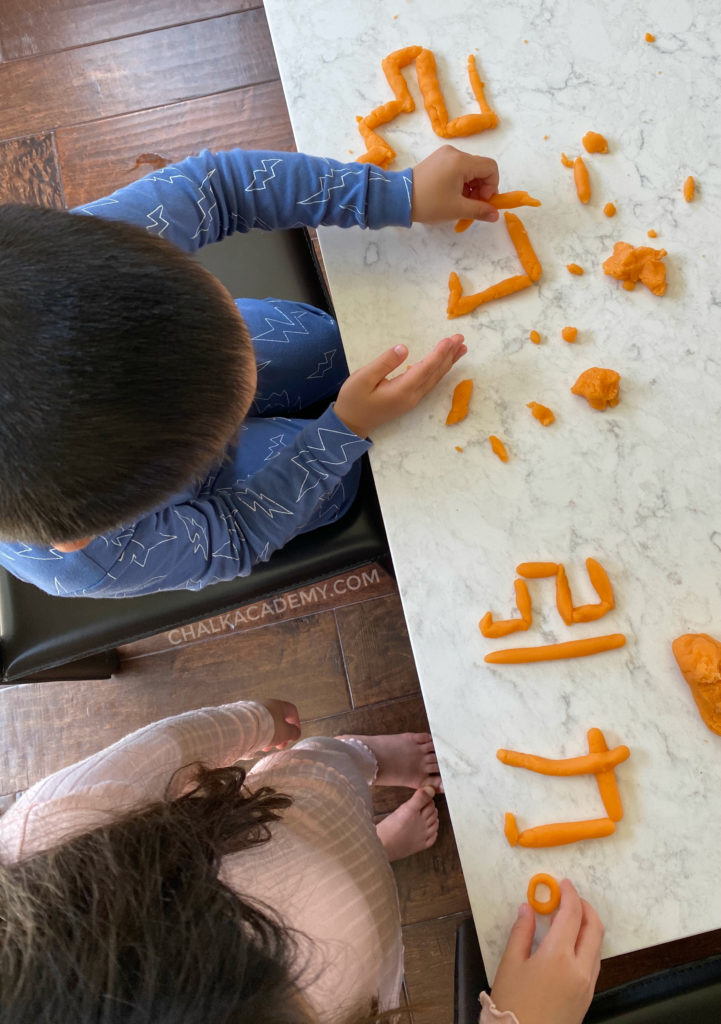
Parents, teachers, and children can create Chinese characters by shaping and molding play dough.
Letter formation helps kids remember individual strokes that make up a character or letter.
Here, my kids are forming Chinese characters with playdough. In this case, they are following Chinese stroke order and paying attention to proportion and positioning.
If your child is just starting out, skip the strictness and just have fun exploring.
Carve Chinese characters on play dough
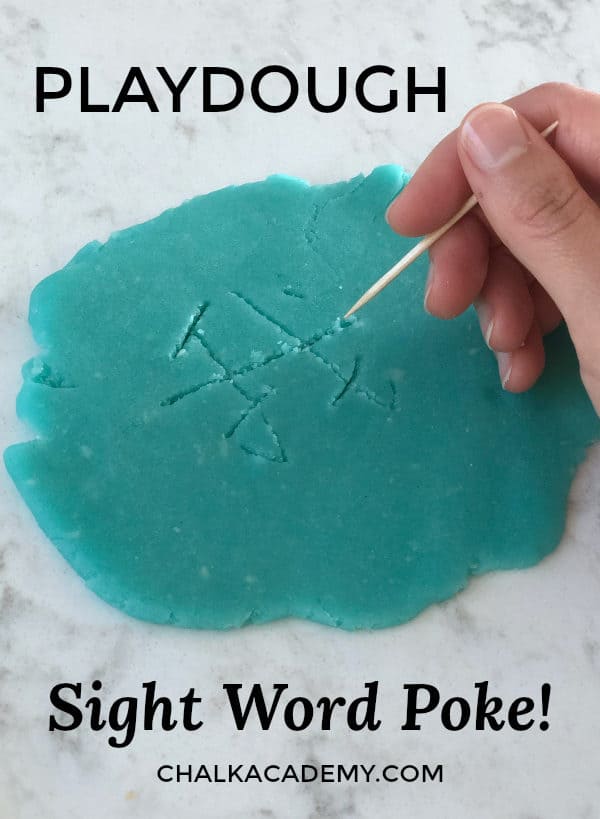
After rolling your play dough flat with a rolling pin, take a toothpick and etch the word that you want to teach your child! In this photo, I wrote 我 (wǒ / me) in Chinese.
Kids who are learning to write can have fun poking and carving messages in play dough.
This is an effective way to strengthen pencil grip muscles without the pressure of writing on paper.
Here is my daughter practicing “writing” 力 following stroke order.
For kids who are not yet ready to write, celebrate the fact that the simple act of poking playdough builds excellent fine motor skills!
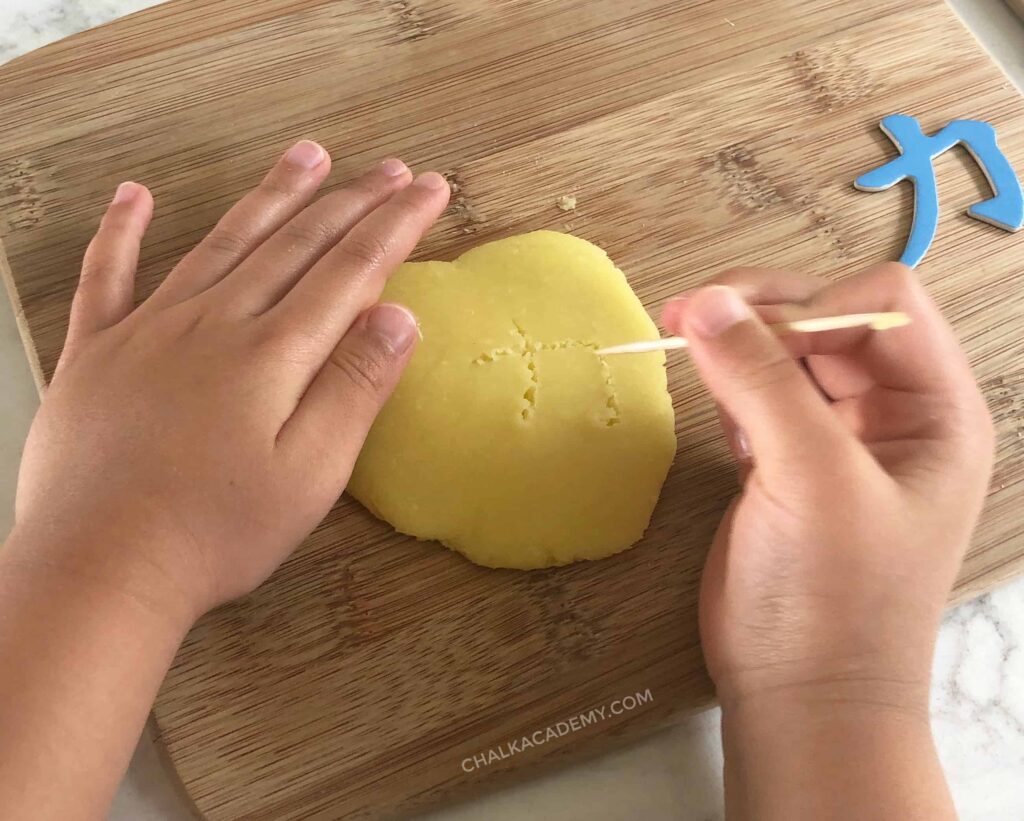
Teach Chinese characters with play dough stamping
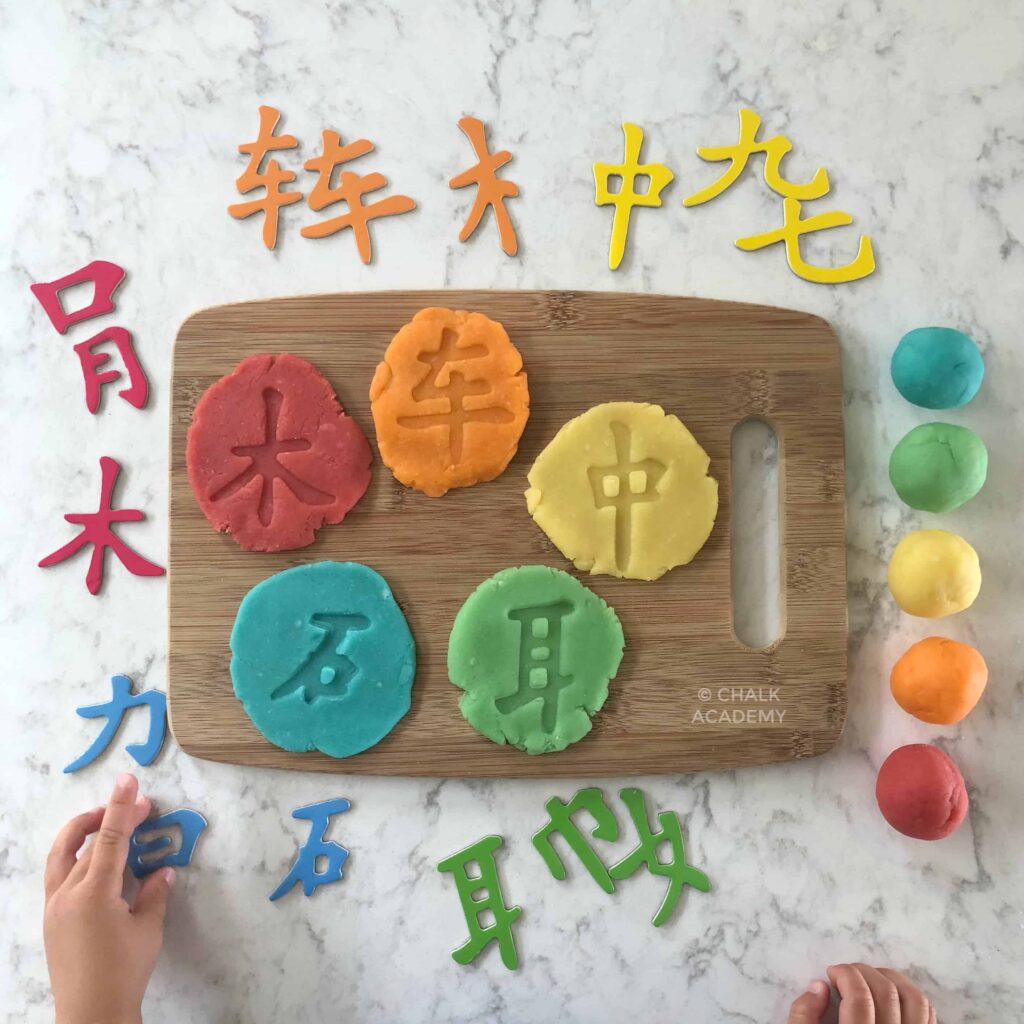
If you have the 磁性拼字拼图 Chinese Characters Magnetic Spelling Puzzle, you can use these pieces to imprint Chinese characters into playdough.
Trace Chinese characters in play dough
After stamping Chinese characters letters in play dough, you can trace words with loose parts like small rocks, buttons, beans, and beads.
Make Chinese characters puzzles with play dough
After stamping Chinese characters into play dough, you can also use the indentations as a puzzle. DIY play dough puzzles can be repeated over and over for reading practice.
I used our Chinese Characters Magnetic Spelling Puzzle to set up a puzzle-matching activity for my toddler. My toddler thought the imprints were so interesting to feel. This curiosity led him to match the Chinese character pieces to the correct location.
Hide and find the missing Chinese character
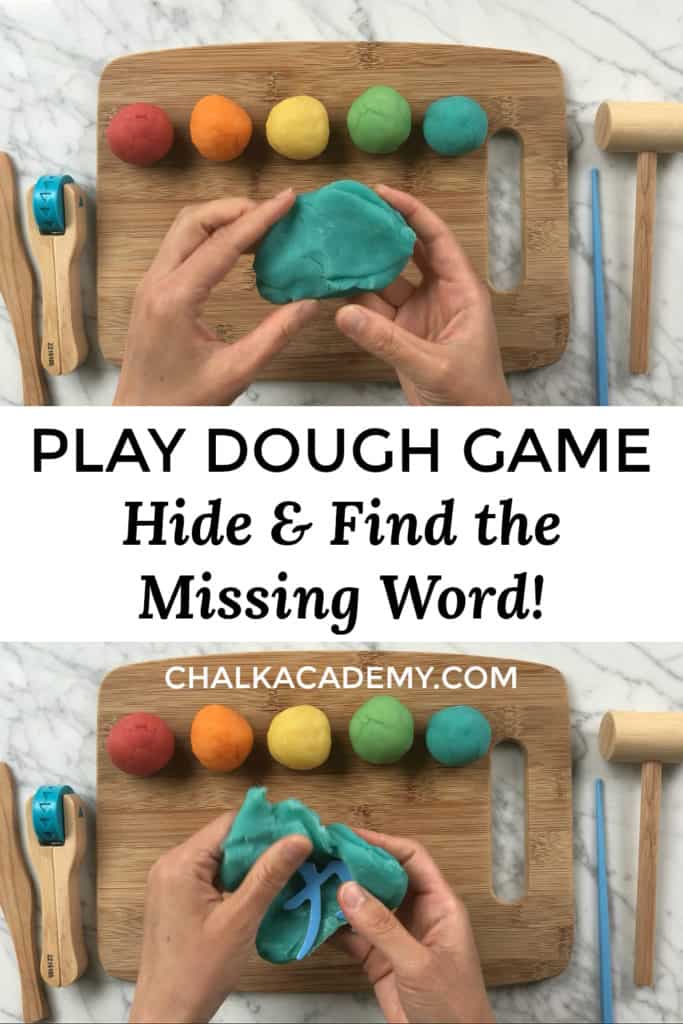
This game is always a favorite for my toddler! When I hide some of the Chinese characters in large balls of play dough, he has a blast discovering what’s inside. In the photo below, I hid the Chinese word 力 (lì ), which means power, force, and strength.
If you don’t have Chinese characters toys, you can write secret letters or messages on paper and hide it inside the play dough.
Video of Chinese play dough learning ideas
Watch this 30-second video summary of fun Chinese playdough activities!
Teach Chinese communication skills with play dough
While doing the aforementioned play dough literacy activities or simply engaging in open-ended, creative play, talk about the sensorial experience with your child. For example, you can narrate the actions they are taking with the play dough.
Each discussion expands vocabulary. Every conversation is a chance to model correct grammar and improve communication skills.
In the photo below, my daughter was telling me about how she created a variety of baked desserts at her pretend bakery. I loved hearing her share her ideas while chatting in Mandarin Chinese!
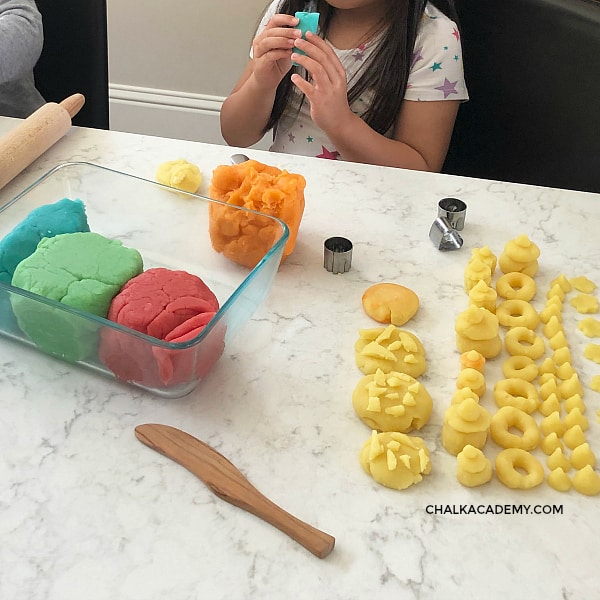
Tools to teach Chinese with play dough
If your kids love play dough, these handy tools can make Chinese learning extra fun.
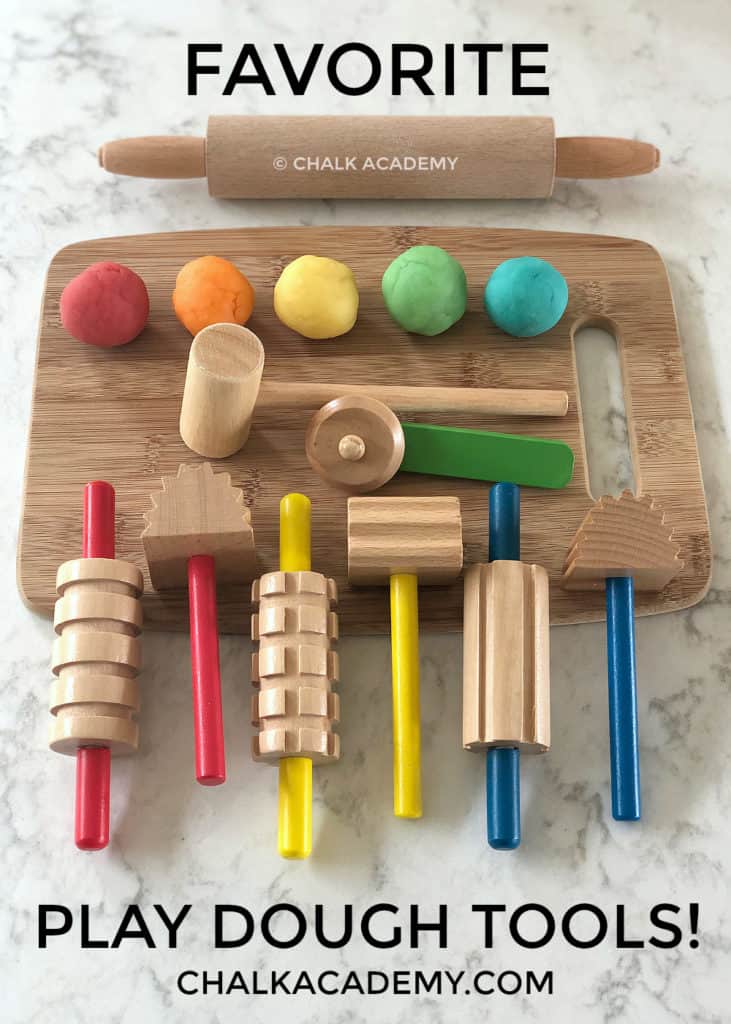
Easy homemade play dough recipes
A few years ago, my teacher friend had us over and showed me how easy it is to make your own play dough. The texture was so soft, the scent was calming, and our children were so focused on exploring the homemade play dough!
Basic homemade play dough recipe
This is the recipe that we used for our Play Dough Mooncakes and Mooncake Moon phases activities.
Play dough ingredients:
- 1/4 cup salt
- 1/2 cup flour
- 1 tbsp cream of tartar
- 1 tbsp veg oil
- 1/2 cup water
- 2+ drops food coloring for pastel color; more for darker color
Directions for making play dough
- Mix water and food coloring
- Mix rest of ingredients in pot
- Add colored water to the pot with the other ingredients
- Mix thoroughly on low heat until contents solidify; remove from heat
- Let cool and knead
- Play time! Wash / dry hands before use so that play dough can last longer.
How to store play dough
- Store in airtight container in refrigerator (eg, ziplock bags; Tupperware with tight lid +/- saran wrap)
- Play dough should last for several weeks to months depending on usage
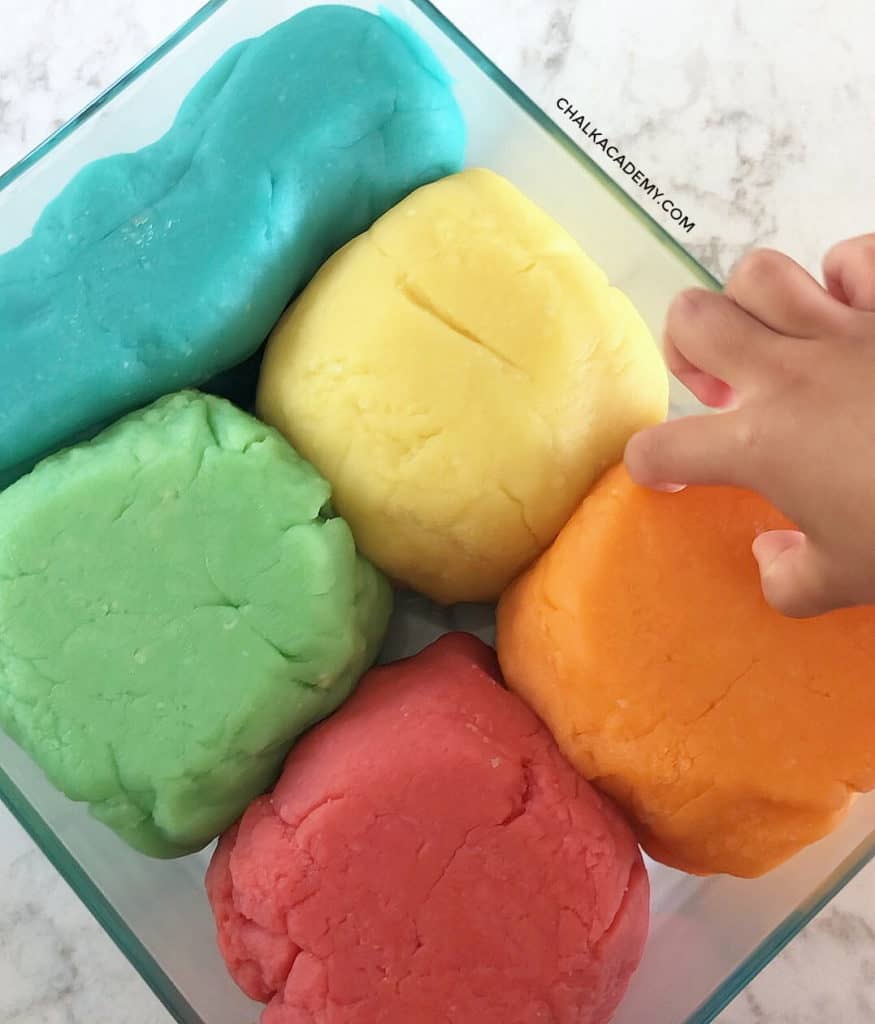
Jello play dough recipe
For a vibrant, sweet-smelling play dough, try this Jello play dough recipe.
Ingredients:
- 1 cup flour
- 1 cup water
- 1/4 cup salt
- 2 tablespoons oil
- 1 tablespoon cream of tartar
- 1 package of Jello (sugar-free or regular)
How to make Jello Play dough
- Mix all the ingredients together and cook over low on the stove.
- Stir frequently to break down clumps
- Cook for 5-7 minutes, stirring with a spatula
- Once the dough starts to gather together and doesn’t stick to your fingers, remove from stove
- Let cool and begin kneading
The colors were vibrant, and my children liked the scent! The only thing I wished I did differently was to half the recipe. Since we made 5 colors (red, orange, yellow, green, and blue), the yield was a very large amount of play dough!
Taste safe play dough
If you have babies and young toddlers and are worried about accidental ingestion from play dough, these recipes claim to be taste safe! Although my children are past the mouthing stage, my friends use these recipes with their little ones:
- Edible, gluten-free no cook play dough (Fun At Home with Kids)
- Allergy-free edible play dough (American Academy of Allergy, Asthma, and Immunology)
Have you tried to teach Chinese with playdough?
If you teach Chinese to your children with play dough, please let us know in the comments! We love seeing how other families have fun learning minority languages at home!
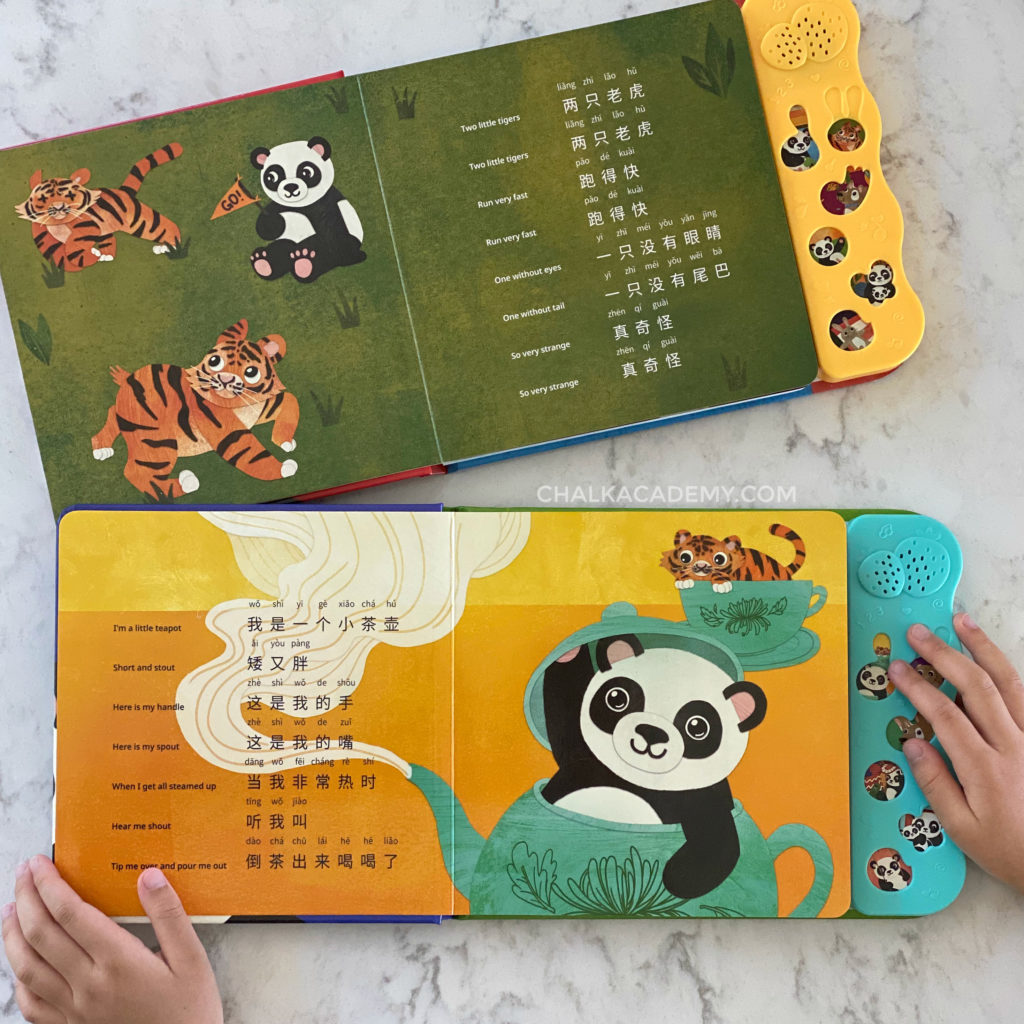
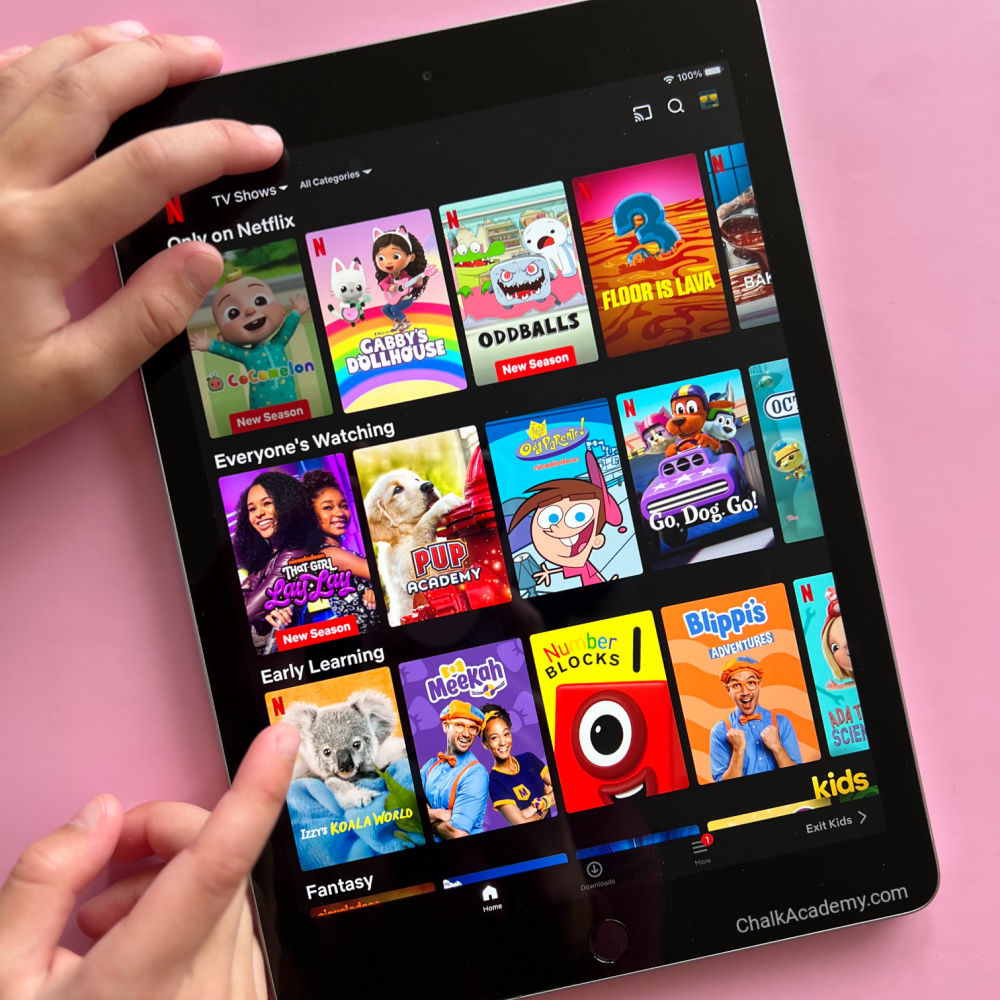
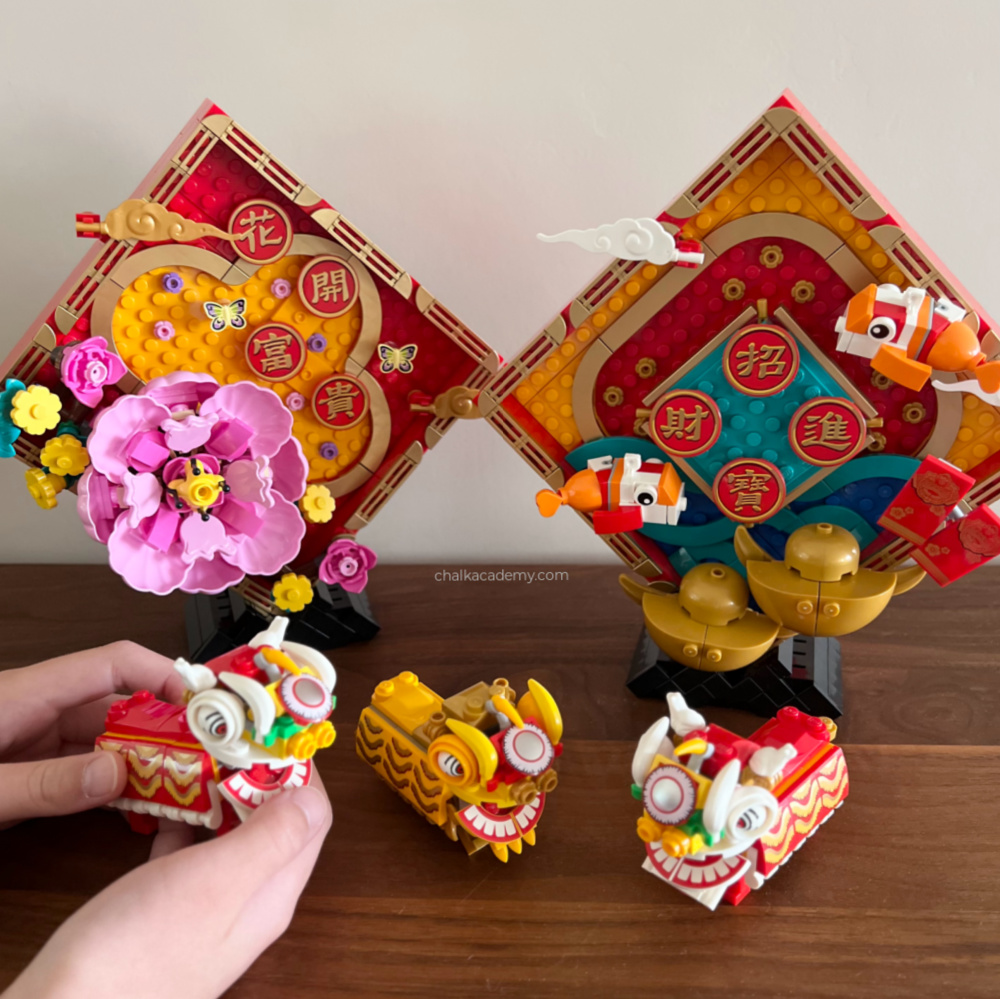
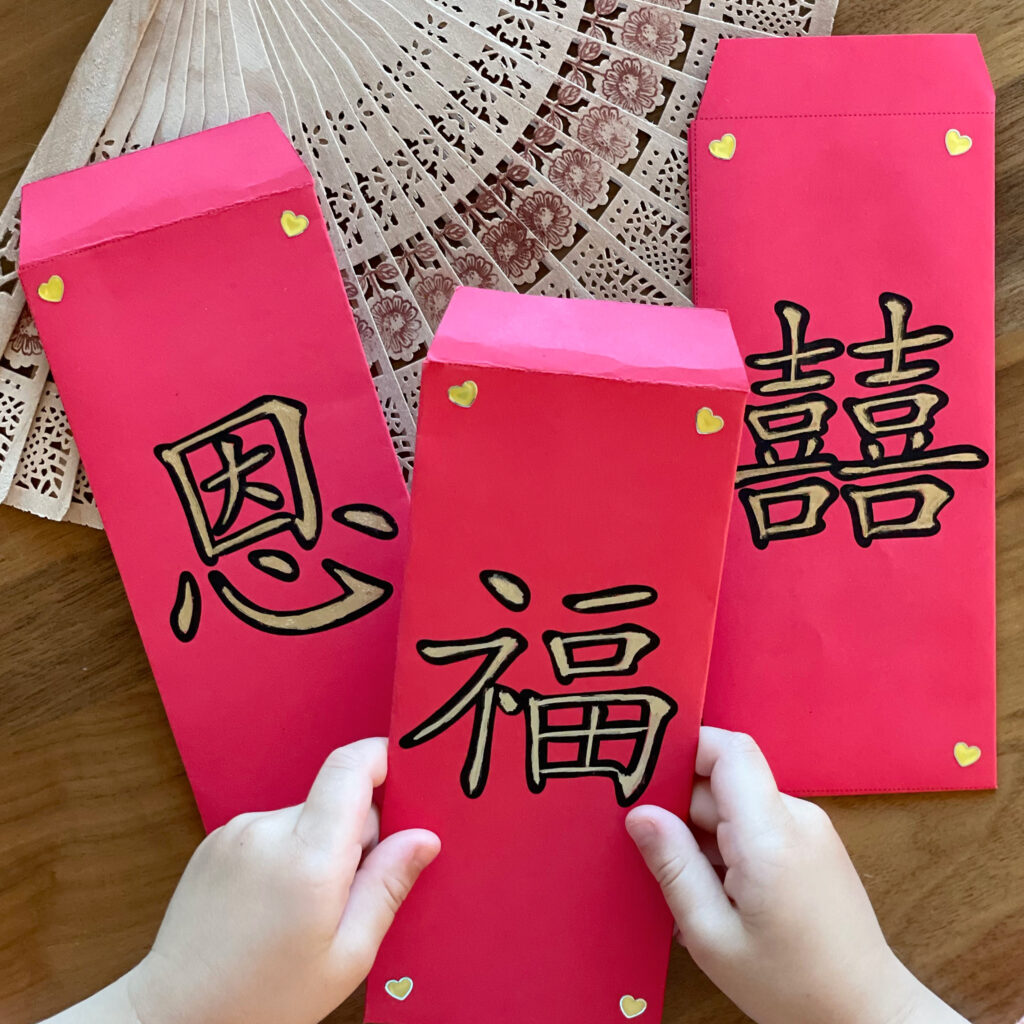
Great ideas! Thank you. We had used playdoh to form characters with success and this helped build on it since my 5 year old saw the picture of the flower and grass and wanted to copy it :). Convenient since we have worked on spring vocabulary this month. Of course, after making the green and yellow playdoh especially for this, they really wanted to use a cookie cutter to make stars. But that was fine – they made lots of stars, we learned the word for star together, listened to twinkle twinkle little star, and then they counted all the stars at the end and wrote the number. Best of all this kept our Chinese lesson today fun (and child-led) and at the end my preschooler asked about the flower so we’ll do that next time.
Hi Lindsay! Thank you for sharing! It’s so fun to hear about your child’s Chinese learning experience with play dough! Great idea to learn about stars with the Twinkle Twinkle Little Star song!